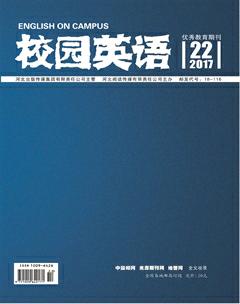A Brief Review of Interlanguage
He+YuZhen
【Abstract】Interlanguage has gradually become an important theory in Second language Acquisition since it was initially proposed in late 1960s and early 1970s. This paper mainly introduces the research process of interlangugae theory for 40 years, focusing on the proposal, development, and characteristics of interlanguage. At the same time, the thesis provides some suggestions and inspiration for future researches, especially the researches of language teaching, in terms of the research method, research content and research level.
【Key words】Brief Review; Interlanguage
1. Introduction
Interlanguage is an important concept in the second language acquisition, which has been proposed for forty years. In foreign countries, the study of interlanguage can be divided into three stages. At home, since Lu Jianyi introduced “interlanguage” into China in 1984, it has been researched by scholars both in teaching Chinese as a foreign language field and foreign language teaching field.
2. Studies on Interlanguage
It has been more than 40 years since the theory of interlanguage was firstly proposed by Larry Selinker in 1972. Researchers have examined interlangugae both abroad and at home.
2.1 Studies abroad
The study of pragmatic failure and acquisition of pragmatic competence has greatly increased in recent years. For example, Satomi (2005) proved that the learners awareness of the form of target language has a great influence on the second language learning. Besides, Dolores (2005) researches whether interlanguage intonation has an effect on the pragmatic effect in expressing certainty and uncertainty.
At this stage, many scholars tend to use more integrated methodology and theories to study interlanguage speech (Zheng, Xie 2011). For example, Nathan (2008) studies the phonemic system with the cognitive linguistics theory. Besides, both Abrabmsson (2001) and Edwards (2006) conduct empirical studies on the acquisition of interlanguage speech by using of comprehensive measures.
2.2. Studies in China
Many scholars have studied the fossilization of interlanguage. For example, Huang Jianling (2001), holds that fossilization is a special form in the process of foreign language acquisition; Song Mengli (1998) holds that the variability and the systematicness are the features of interlanguage. It is believed that studies should be extended to all levels, and to find new theories to explain the variability of interlanguage.
3. Thinking and Prospects for Interlanguage
Based on the previous studies on interlanguage abroad and in China, some suggestions can be provided for the future research from the research method, research content and research level.
3.1 Enriching research contents
Domestic and foreign research contents of interlanguage require of being further enriched and perfected. The main trend of the current research content is the combination with other subjects, such as Cognitive, Psychology, Sociology, Anthropology, Linguistics, or the latest Computer Linguistics. The cross between the subjects is more conducive to the development of language teaching. And the interdisciplinary cross-explored is more helpful to the development of language teaching.
3.2 Expanding research level
On the one hand, the domestic and foreign researches has been stuck in the syntax and vocabulary, so the research on these two levels has been very mature. However the development of the new period should make the research of syntax and vocabulary rise to the level of cognition, psychology and net. On the other hand, although empirical research has been connected with practical teaching, these studies mainly inspire our teaching theoretically, and give less real guidance to our practical teaching. In addition, we should further perfect the study of the interlanguage from three aspects: voice, semantic and text.
4. Summary
The study of interlanguage in foreign language circles is less, lacking of theoretical guidance, and the research power is very weak so that the levels and results of research are not suitable for foreign language teaching. We should find out the interlanguage system model of Chinese English learners and the existing problems. Moreover, the research results should be applied to foreign language teaching. At the same time, in the foreign language teaching, we should further enrich and develop the theory of interlanguage.
References:
[1]Abrabamsson,N.2001.Acquiring L2 Syllable Margins:Studies on the Simplification of Onsets and Codas.Stockholm:Center for Research on Bilingualism.
[2]Corder,S.P.1971.Idiosyncratic Dialects and Error Analysis.International Review of Applied Linguistics in Language Teaching:(9):147-160.
[3]Dewaele,J.M.& Adrian F.2000.Personality and Individual Differences Personality and Speech Production:A Pilot Study of Second Language Learners.System:(2):89-93.

